Window shutters beginning of XIV century. The period of the Turkic dynasty of Karamanids (1250-1487).)
It was this dynasty according to legend was the first to introduce the Turkish language as a major in the state (1277 year)
Brought shutters from the mausoleum of Konya. Wood carving is different from the style of Seljuks. However, the depth of skill further enhances the effect of chiaroscuro. Unlike vegetable decoration of the Anatolian Seljuk period, the drawings of the masters Caramanico more realistic

Astrolabe of the Mamluk period (1282).)
I really like the name of an astronomical instrument - the astrolabe. It was invented by the ancient Greeks. The device is based on the principle of stereographic projection. Such issues in ancient Greece engaged Hipparchus (190 BC). In earlier years, Aristarchus of Samos (310 BC) described a method for determining the distance to the moon and the Sun, as well as their dimensions
Found this astrolabe in Topkapi Palace. The astrolabe bears the inscription that it was made in Egypt in 681. The device is constructed, a poor artist Khashan bin Omer
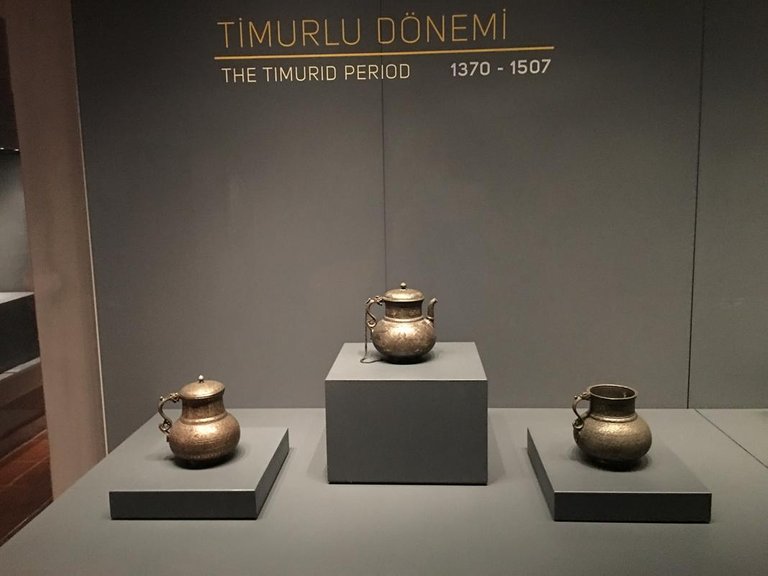
Glass products - oil candlesticks. During the reign of the Mamluks (1250-1517)
In the photo on the left is a beautiful oil lamp. Glass is used in Islamic art as a lighting device. This lamp belongs to the 14th century. It has a convex shape and a long neck that extends upwards. There are six handles to attach the chain. The oil lamp is painted in blue and red paint on transparent glass. Decorations are geometric and floral compositions. The paints on the glass are applied by enameling technology in a certain way that the glass becomes resistant to the burning temperature of the oil candle
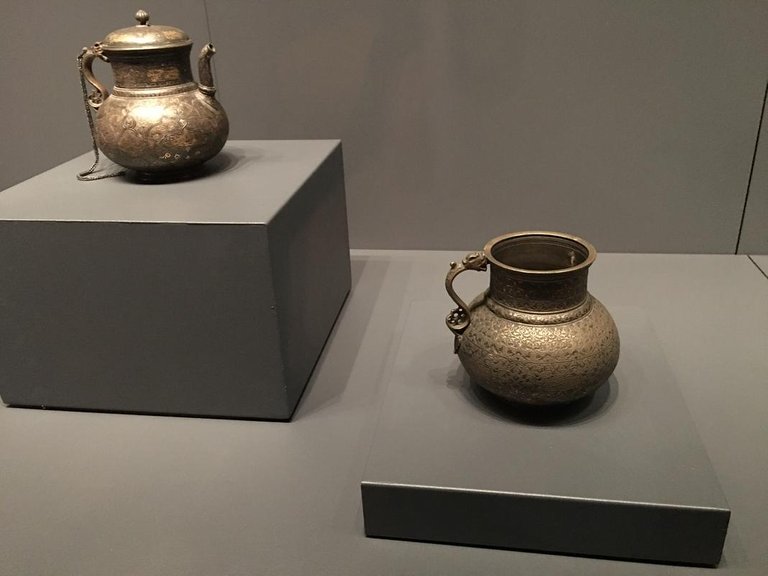
Products of the Timurid era
Very thin and beautiful design of the kettle and jug. Specially inserted a photo where the closer visible products

Badia. The Mamluk period ( Between 1470 and 1490)
Made of brass from the Mamluk era, Badia is a large-format body in the form of stones with forged technique. Decorated with gold inlay and silver foil. The setting of the stone is bordered by Lotus, flowers and leaves. This type of ornament is also observed in the book ornaments of the Mamluk period. At the base are rounded medallions and rectangular cartridges, which are cut by knitting motifs in the form of triangles
In the art of Mamluks it is evident that the same ornament is used in wood carving, the art of working with leather and stone works. Treatment compositions of the stone and placement of the gold and silver foil by carving on the surface reflect the style of the school of Mosul.
It is known that some of the masters of Mosul, who fled the Mongol invasion, migrated to other regions. Worked for Artukids, in Syria, in Egypt, and then from the Mamluks
The product was found in the Palace Museum Topkapi
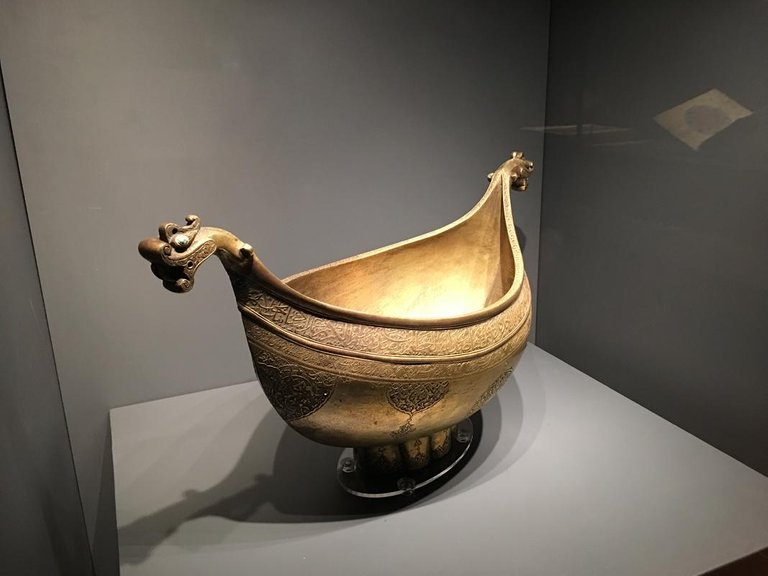
Keshkul, the beginning of the XVII century. Safavid Period
Cascade is a peculiar dish that was used by dervishes to collect alms. The collected goods were then delivered to the monastery. I was very surprised by the decoration of keshkul for alms...
Keshkul refers to the Safavid period of the 17th century. The product was found in the Topkapi Palace. The cashew is made of brass using a casting method. Decorated equipment scrapers and stamping. It has two handles with a thin base and a boat body. On each side are dragons whose eyes are filled with turquoise stones. I really liked the product, could not take my eyes...
On top of the bowl written words from the Koran. The following words in Persian language

The Holy Quran, the time of the Safavids ( 1591-1592 years)
The size, volume and page, reflect the characteristics of calligraphy in the Safavid period, by Ibn Kasim of Diab al-Aucheap al-Shiraz.
A very unusual design of the Koran flyleaf and cover art that has never been seen in Islamic book art
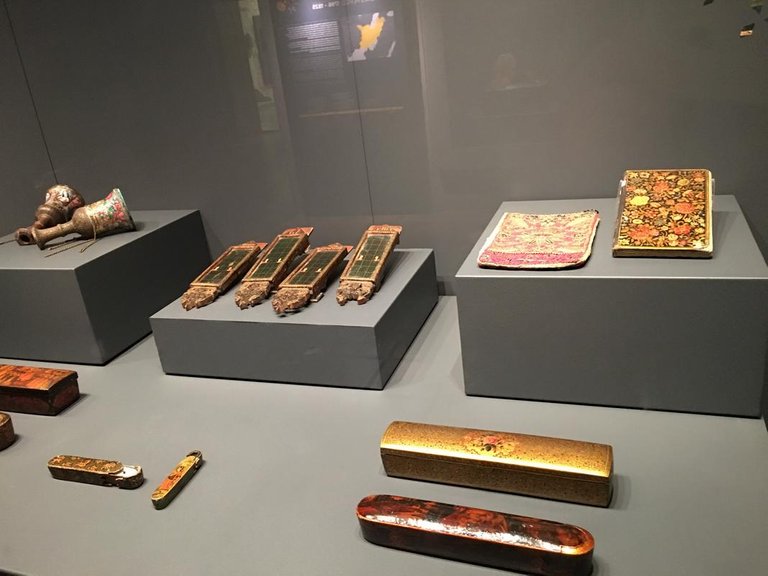
Beautifully decorated mirrors. XIX century, the dynasty of the Qajars
The exhibits of the XVIII century, the dynasty of the Qajars
Pencil cases
Very beautiful design boxes! The design of this style during the Qajar period was called Palace. Most likely it is the influence of European art of the XVIII century on the masters from Iran
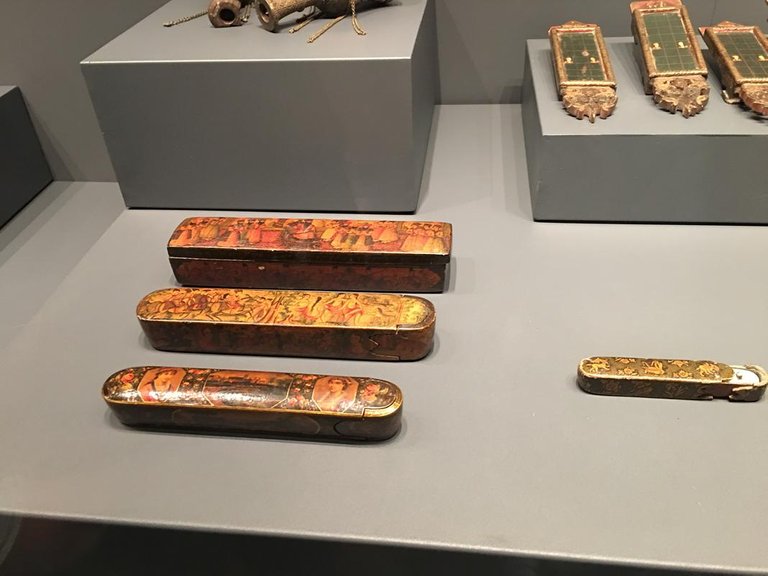
Playing cards of the XVIII century, the dynasty of the Qajars
This is a game set consisting of four wooden cards. It's lacquered wood with carvings on the bottom. And the carved figures are totally different
The game has different names in different countries. It may be Pecic, Parchesi, Parchisi. Most likely it is a prototype of the ancient game Pattoli...
My story came to an end. We learned a little about the evolution of culture and art of the Turkish people from the XI century to the Ottoman period. The exhibits of the Ottoman Empire will be considered in another post.
Thank you for attention!
More photos of the iPhone 6s+